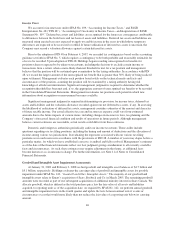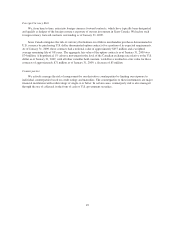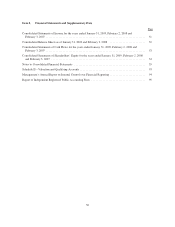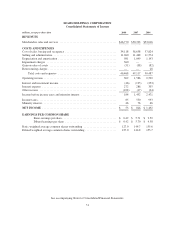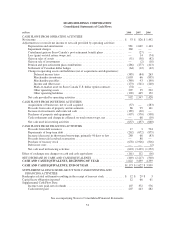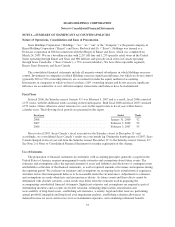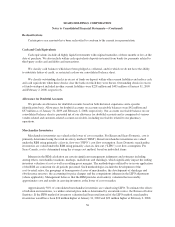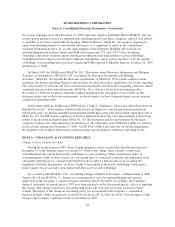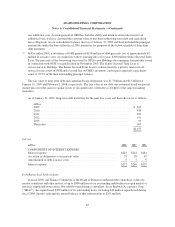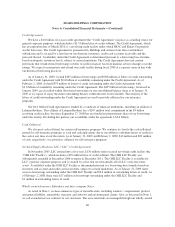Sears 2008 Annual Report Download - page 56
Download and view the complete annual report
Please find page 56 of the 2008 Sears annual report below. You can navigate through the pages in the report by either clicking on the pages listed below, or by using the keyword search tool below to find specific information within the annual report.SEARS HOLDINGS CORPORATION
Notes to Consolidated Financial Statements—(Continued)
Reclassifications
Certain prior year amounts have been reclassified to conform to the current year presentation.
Cash and Cash Equivalents
Cash equivalents include all highly liquid investments with original maturities of three months or less at the
date of purchase. We also include within cash equivalents deposits in-transit from banks for payments related to
third-party credit card and debit card transactions.
We classify cash balances which have been pledged as collateral, and for which we do not have the ability
to substitute letters of credit, as restricted cash on our consolidated balance sheet.
We classify outstanding checks in excess of funds on deposit within other current liabilities and reduce cash
and cash equivalents when these checks clear the bank on which they were drawn. Outstanding checks in excess
of funds on deposit included in other current liabilities were $228 million and $405 million at January 31, 2009
and February 2, 2008, respectively.
Allowance for Doubtful Accounts
We provide an allowance for doubtful accounts based on both historical experience and a specific
identification basis. Allowances for doubtful accounts on accounts receivable balances were $42 million and
$37 million as of January 31, 2009 and February 2, 2008, respectively. Our accounts receivable balance on our
consolidated balance sheet is presented net of our allowance for doubtful accounts and is comprised of various
vendor-related and customer-related accounts receivable, including receivables related to our pharmacy
operations.
Merchandise Inventories
Merchandise inventories are valued at the lower of cost or market. For Kmart and Sears Domestic, cost is
primarily determined using the retail inventory method (“RIM”). Kmart merchandise inventories are valued
under the RIM using primarily a first-in, first-out (“FIFO”) cost flow assumption. Sears Domestic merchandise
inventories are valued under the RIM using primarily a last-in, first-out (“LIFO”) cost flow assumption. For
Sears Canada, cost is determined using the average cost method, based on individual items.
Inherent in the RIM calculation are certain significant management judgments and estimates including,
among others, merchandise markons, markups, markdowns and shrinkage, which significantly impact the ending
inventory valuation at cost as well as resulting gross margins. The methodologies utilized by us in our application
of the RIM are consistent for all periods presented. Such methodologies include the development of the
cost-to-retail ratios, the groupings of homogenous classes of merchandise, the development of shrinkage and
obsolescence reserves, the accounting for price changes and the computations inherent in the LIFO adjustment
(where applicable). Management believes that the RIM provides an inventory valuation that reasonably
approximates cost and results in carrying inventory at the lower of cost or market.
Approximately 50% of consolidated merchandise inventories are valued using LIFO. To estimate the effects
of inflation on inventories, we utilize external price indices determined by an outside source, the Bureau of Labor
Statistics. If the FIFO method of inventory valuation had been used instead of the LIFO method, merchandise
inventories would have been $26 million higher at January 31, 2009 and $22 million higher at February 2, 2008.
56


